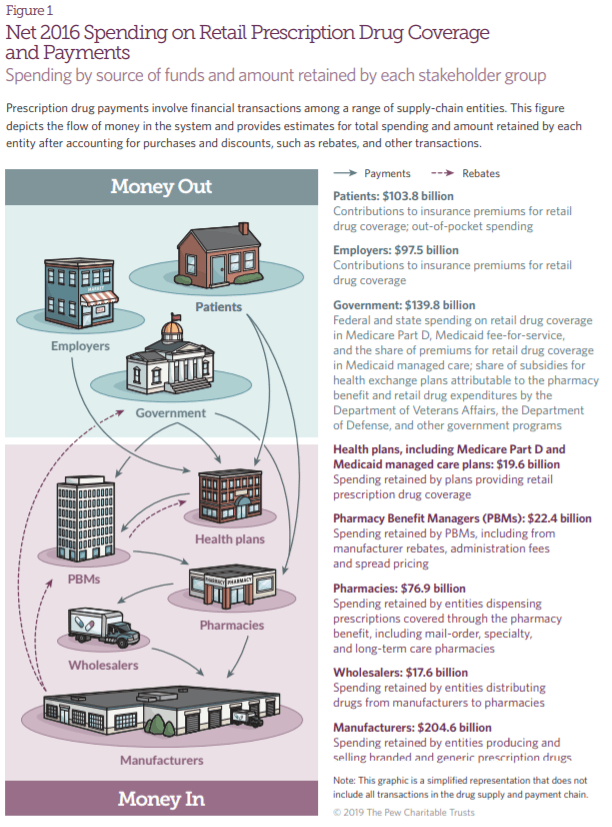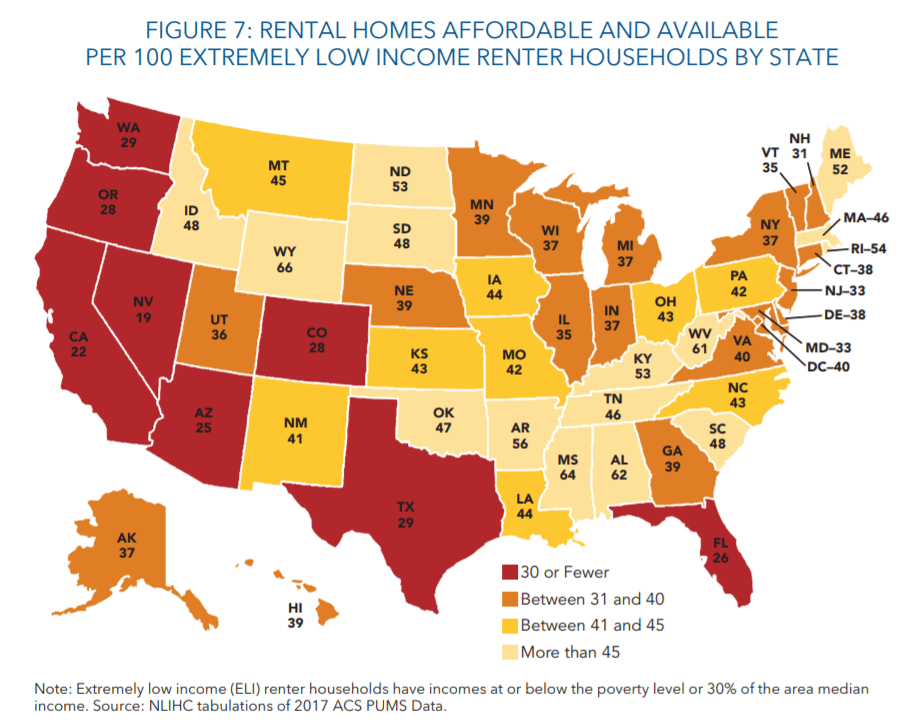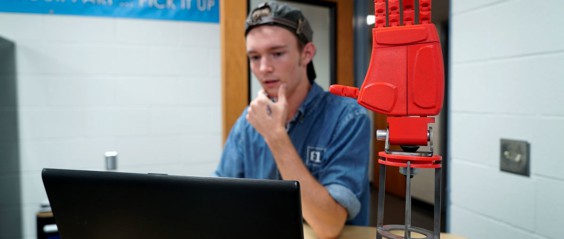In the Weeds
Pew Charitable Trusts released a report last week looking at the rising cost of retail prescription drug spending from 2012 to 2016. The main findings include:
- Net spending on retail prescription drugs increased from $250.7 billion in 2012 to $341.0 billion in 2016.
- While list prices for brand name drugs continued to grow, much of that growth was offset by manufacturer rebates.
- Out-of-pocket spending by patients remained stable due to increased insurance coverage and manufacturer assistance.
The graphic below shows how much money the various stakeholders either paid for prescription drugs (individuals, employers, and government) or made from prescription drug spending (manufacturers, pharmacies, etc.) in 2016. As you can see, the government was the largest spender and manufacturers made the most money in 2016.

Contextual Healing
For every 100 extremely low income renter households, North Carolina has just 43 affordable and available rental homes, according to a new report from the National Low Income Housing Coalition. This is better than some states, most notably Florida, Texas, Colorado, and the Pacific Coast states, but it is the third lowest in the Southeast behind Virginia and Georgia.

Why does this matter? Not having enough affordable and available housing means that those who can least afford it are forced to spend more of their income on housing. According to the report, 71 percent of extremely low-income renters, defined as living at or below the federal poverty line, spend more than half of their total income on rent and utilities, meaning they have less to spend on other necessities such as food, health care, and child care. In addition, about half of extremely low-income renters are seniors or disabled.
The report makes several recommendations for the federal government, noting the role that decent, stable housing plays in the health of both adults and children and economic mobility. Recommendations include rehabbing existing public housing, expanding the Low Income Housing Tax Credit, and investing in the national Housing Trust Fund.
For Your Consideration
EdNC continues its series on North Carolina’s Education Pipeline, based on the report from Carolina Demography and the Belk Endowment. Watch this video of Nash Community College student Kizzie Harrison, who returned to college and persevered through her daughter’s diagnosis of Crohn’s disease with the help of Single Stop. You can find the other student profiles and EdNC Explains videos here.
What we're reading
Video: College and career readiness, explained
What does college and career readiness mean, and how is our state doing?... Read the rest-
Nine local partners in Charlotte form a new reporting collaborative, with Solutions Journalism Network and the Knight Foundation
-
Citywide data partnership offers new ways to serve students
-
Skilled blue-collar jobs are growing – though women aren’t getting them
-
3 cities in the U.S. have ended chronic homelessness: Here’s how they did it
-
Thanks to Duke, Durham's Light Rail Dream Is All But Dead
-
How Employers Are Fixing Health Care


